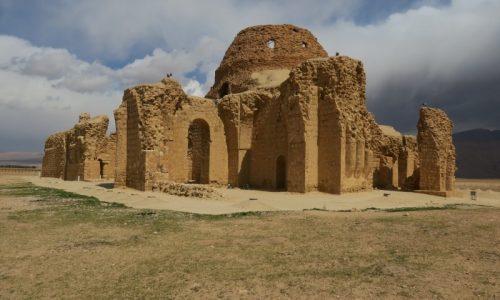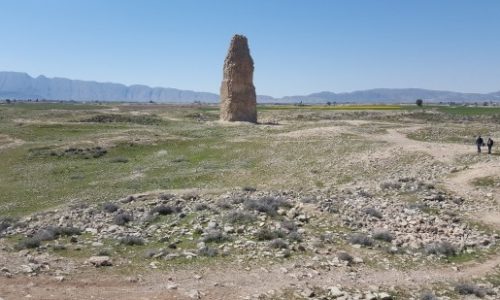Sassanid Archaeological Landscape of Fars Region
Sassanid Archaeological Landscape of Fars Region is one of the most significant Iran destinations. It is composed of eight archaeological site components in 3 different geographical regions located in Fars province: Sarvestan, Firuzabad, and Bishapur. The components are fortified castles, palaces, fire temples, and remains of ancient cities like the city of Gur known as Ardeshir Khureh and Bishapur which dates back to the Sassanid era from 224 to 651 CE. Sassanid Archeological Landscape of Fars Region is so great for an experience of amazing Iran adventure tour and also a very indelible cultural tour in Iran. It is inscribed in UNESCO World Heritage Sites in 2018.


Previous
Next
Sarvestan
9 km to the south west of Sarvestan city there is a Palace in the name of Sassanid Sarvestan Palace, which been built by Bahram Gour or Bahram V Sassani in the 5th century AD, is a large and complex and diverse style of building, with stone and plaster and has the oldest brick domes, porches, big rooms and many atriums. Some researchers of Sassanid architecture believe that the construction of this building was one of the first steps towards a special construction style of which the gothic architecture can be seen as its ultimate realization.
The ancient city of Gor is one of the most valued and important historical ruins. The remains of the ancient city of Gor is located on the north west of the modern city of Firuzabad in Fars provice. The old border mud walls and ditch surrounding the city and the stone carved monuments and brickworks are covering all the area which dating back to Achaemenid period. It was destroyed by Alexander the Great.
The city was revived by Ardeshir I, the founder of Sassanian Empire after the Parthians captured Isfahan and Kerman in 224 AD. It was ransacked by Arab Muslim invasion in the seventh century.
It had a circle plan and supported by a trench 50 meters in width and 2 kilometers in diameter. It had 4 gates: Hormozd gate in the north; Ardeshir gate in the south; Mithra gate in the east and Bahram gate in the west. It is said that it was the first circle city not only in Iran but in the world.
Firuzabad palace referred as the palace of Ardeshir Babakan is located 2 km in the north of the ancient city of Gur. It was built by king Ardeshir I and is known as Atashkadeh (fire temple).
Ghale Dokhtar or Dokhtar castle (The Maiden Castle) is located near Firuzabad (Pirouzabad) on a mountain slope overlooking the river and roadway which was built by Ardeshir I in 209 AD. In Persian it is called Dezh Dokhtar. There are different narrations about the name of this castle. Some believes that it refers to the goddess Anahita who was a maiden. Some others believe that it implies impregnable to any attack, so they called it the maiden.
The castle is in 3 levels and access to the castle is via a tall gateway through a rectangular tower by a broad stairway which leading up to a huge rectangular shape hall in each level. The first stairways supported by blind niches on either side and two large buttresses at the east end. The second level has a porch (in farsi called iwan) at the east and arched blind windows on either side. This hall was roofed by an arched vault.
Bishapur is located 100Km to the west of the city of Shiraz, near the city of Kazeroon, this city was built by King Shapur the First, the city had Palaces, the stone covrings, and Zoroastrian fire Temple. The city is also called the City of Shapur, which is situated in an area called Tang Chogun (Chogun valley). Bishapur is one of the ancient cities which the year established has been recorded on a stone tablet. Bishapur is a treasure trove of valuable Sassanid works such as Anahita temple. The city was flourishing and residential up until the first centuries of the rise of Islam.
The most important stone carving on mountain wall is the King Shapur’s head. On the side of Tang-e Chowgan there is a cave called Shapur’s Cave, which contain a large stone carved statue of Shapur, 7 meter tall.
